First Man
 for some thematic content involving peril, and brief strong language.
for some thematic content involving peril, and brief strong language.
Reviewed by: Keith Rowe
CONTRIBUTOR
| Moral Rating: | Offensive |
| Moviemaking Quality: |
|
| Primary Audience: | • Adults • Young-Adults |
| Genre: | Biography History Drama Adaptation IMAX |
| Length: | 2 hr. 21 min. |
| Year of Release: | 2018 |
| USA Release: |
October 12, 2018 (wide—3,500+ theaters) |
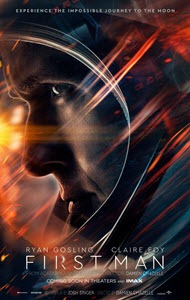

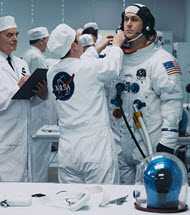
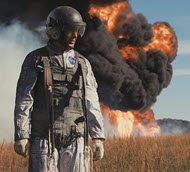 -->
-->
Courage / bravery
Differences between the movie’s depiction and the real events
Cancer
Where did CANCER come from? Answer
How did bad things come about? Answer
Why does God allow innocent people to suffer? Answer
What about the issue of suffering? Doesn’t this prove that there is no God and that we are on our own? Answer
Does God feel our pain? Answer
What kind of world would you create? Answer
What is DEATH? and WHY does it exist? Answer in the Bible
Difficulties of families dealing with death
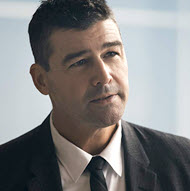
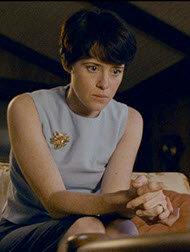
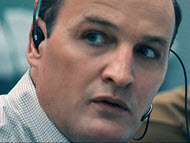
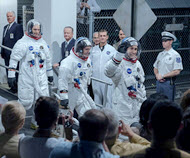
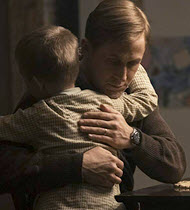

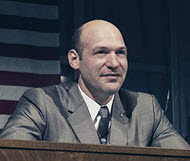
| Featuring |
Ryan Gosling … Neil Armstrong Claire Foy … Janet Armstrong Pablo Schreiber … Jim Lovell Christopher Abbott … Dave Scott Ethan Embry … Pete Conrad Ciarán Hinds … Robert Gilruth Jason Clarke … Ed White Kyle Chandler … Deke Slayton Corey Stoll … Buzz Aldrin Shea Whigham … Gus Grissom Patrick Fugit … Elliott See Lukas Haas … Mike Collins Brian d'Arcy James … Joseph A. Walker See all » |
| Director | Damien Chazelle — “La La Land” (2016), “Whiplash” (2014) |
| Producer |
Amblin Entertainment DreamWorks See all » |
| Distributor |
I must confess… space was my first love. Practically before I knew the alphabet, I knew the names of the nine planets (I grew up before Pluto was downgraded to a dwarf planet). I’m also reasonably certain that I knew the names Neil Armstrong, Edwin “Buzz” Aldrin and Michael Collins before I knew my multiplication tables—an assumption made even more likely by the fact that I’m terrible at math.
To say it’s a thrill to see a movie that chronicles the historic first mission to the moon is a galactic understatement. What a critical period in our nation’s history. What a sacrifice (ultimate, in some cases) made by the army of scientists, engineers, mechanics, support personnel and, of course, intrepid astronauts—all of whom made the Apollo 11 mission possible and successful.
Based on the book First Man: The Life of Neil A. Armstrong by James R. Hansen, “First Man” begins in 1961 when Armstrong (Ryan Gosling), a test pilot in California, gets a taste of space when he flies his X-15 jet high into Earth’s atmosphere. When the plane malfunctions, Armstrong relies on his mechanical know-how, piloting acumen and nerves of steel to help him return safely to terra firma.
Turns out this brush with death was just a dress rehearsal. When an initially successful Gemini 8 mission takes a dangerous turn, also instigated by a mechanical failure, Armstrong’s skills are put to the test as he attempts to salvage the mission and save his crew. Of course, anyone familiar with the Apollo 11 mission knows it wasn’t exactly smooth sailing and that, once again, Armstrong’s mettle was challenged.
Besides being a natural-born pilot, one of the reasons Armstrong was able to survive so many close calls with death was his preparedness. Even when he was at home, Armstrong was constantly working out solutions to potential problems on the dining room table. One of the best lines in the film is when Armstrong tells Deke Slayton (the ever dependable Kyle Chandler) “We need to fail down here so that we won’t fail up there.” That kind of dogged determination to get things right helped to preserve Armstrong’s life and the lives of those under his command.
The gritty, metal-creaking realism during the heart-stopping flight scenes is enough to induce a panic attack. Cinematographer Linus Sandgren brilliantly builds tension by keeping his shots tight on the performers, which creates an overwhelming sensation of claustrophobia. Adding visceral punch to the cockpit scenes are the many POV shots of the characters looking out the small windows at lunar landscapes or, most nauseatingly, the Earth zipping past at regular intervals as the ship spins out of control.
Of course, if “First Man” was simply a period picture that recounted the failures and successes of the space program during the 60s, it would get pretty boring pretty fast. Wisely, writer Josh Singer grounded the story with several significant events that impact the character’s personal lives early in the film.
At its core, “First Man” is an examination of the effects of trauma. Armstrong loses a family member and several close friends. He uses that anger and grief to fuel his resolve to make it to the moon. But before he can set foot on that distant rock, Armstrong must overcome adversity, tragedy and the laws of gravity and probability.
Gosling, who previously worked with director Damien Chazelle on “La La Land” (2016), delivers a beautifully understated performance as a grief-stricken man who summons the courage to rise above the many tragedies he’s been forced to endure. “First Man” is a nuanced character study of a man trapped between two worlds… the pain of the past propels him toward the promise of a brighter future.
As with similarly themed films set during this era, such as “The Right Stuff” (1983) and “Apollo 13” (1995), “First Man” reveals the plight of the astronaut wives who anxiously waited at home for days on end as their husbands traversed the dark expanse of space. As Armstrong’s wife, Janet Shearon, Claire Foy effectively embodies the debilitating effects of such constant worry.
In addition to the individual price that was paid during the missions into space, there was also a societal toll. While the Space Race raged on, many people questioned the exorbitant appropriations for the space program. One of the movie’s more poignant passages is a brief montage of various political protests from 60s, which is accompanied by the Gil Scott-Heron song, “Whitey on the Moon.” This exposes the adverse consequences of the space program—America’s quest to beat Russia to the moon brought about the suffering of many people.
Negative Aspects
The film starts out very clean—the first swear word is uttered near the half hour mark. But as the action increases, so do the number of expletives. There are a few instances each of h**l and d**n. The word s**t is employed a handful of times. The F-word is dramatically stated in a key scene. God and Jesus’ names are taken in vain a couple times each. Another example of unsavory speech is when one character at the Houston command center yells “screw” the Russians.
There are a number of social gatherings in the film, backyard parties and funeral receptions, and we see characters drinking from beer bottles or wine glasses. Two buddies drink Busch brand beers in one scene. A number of characters are shown smoking, including two women.
Though the movie doesn’t have any graphic violence, several scenes contain moments of peril and heightened intensity. Most of these scenes take place inside a spacecraft. The one exception is the lunar lander test crash, which results in Armstrong walking away from the flaming vessel with some blood and scratches on his face. After learning about the death of a friend, Armstrong breaks a wine glass in his hand. The sharp glass cuts into his palm and makes it bleed. The movie’s most horrific scene is when a fire breaks out inside a cockpit. Although we see the flames engulf screaming astronauts, the scene cuts away to a shot outside the sealed cockpit door to spare us a more gruesome display.
Final Evaluation
“First Man” is a staggering cinematic achievement, both in terms of its immersive, pulse-pounding space sequences and in its accurate depiction of the often tragic early days of the space program. The film boasts tremendous production values, deft direction and stellar performances from Gosling, Foy and the impressive array of journeyman actors.
The evocative score by Justin Hurwitz features a number of unusual instruments, including the theremin, which was used to great effect in many 50s sci-fi movies. Delicate harp tones are heard during several space scenes; the ethereal arrangement produces an appropriately otherworldly score which is both inspiring and haunting.
Like many of the aircraft/spacecraft it features, “First Man” has some serious flaws. At 2 hours and 21 minutes, the film is 10-15 minutes too long. Also, the stark contrast between the deliberate scenes on Earth and the frenetic sequences in space make this an exasperatingly uneven movie.
The moon walk sequence is a visual marvel, yet is sadly lacking in magic. Where’s the elation of hopping along the lunar landscape? We only catch a brief glimpse of this. Where’s the national pride of planting the American flag on the moon? The entire sequence is shot in a strangely detached manner. Lightheaded euphoria is eschewed in favor of art film moodiness. This is a tremendous disservice to spectators, who patiently waited the entire movie for an exhilarating, triumphant climax. The moon landing was one of the defining moments in human history and deserved far more grandeur and excitement than what Chazelle delivers.
Another disappointing choice by Chazelle is the muted, ho-hum ending. Rather than fanfare and ticker tape, the director closes out the film with an awkwardly unemotional reunion between Armstrong and his wife.
Regardless of its many missteps, “First Man” is a deeply-affecting biopic that somehow manages to achieve maximum intensity despite its slow pacing. The film is relentlessly jarring, so if you suffer from motion sickness you might want to take a Dramamine before entering the theater. “First Man” is one bumpy ride.
- Violence: Moderate
- Profane language: Moderately Heavy— “J*sus Christ,” “J*sus,” “H*ll” (4), “damn” (3)
- Vulgar/Crude language: Moderately Heavy— f-word (1), scr*w (1), s-words (3)
- Nudity: None
- Sex: None
- Occult: None
See list of Relevant Issues—questions-and-answers.


Moral rating: Average / Moviemaking quality: 2½
PLEASE share your observations and insights to be posted here.
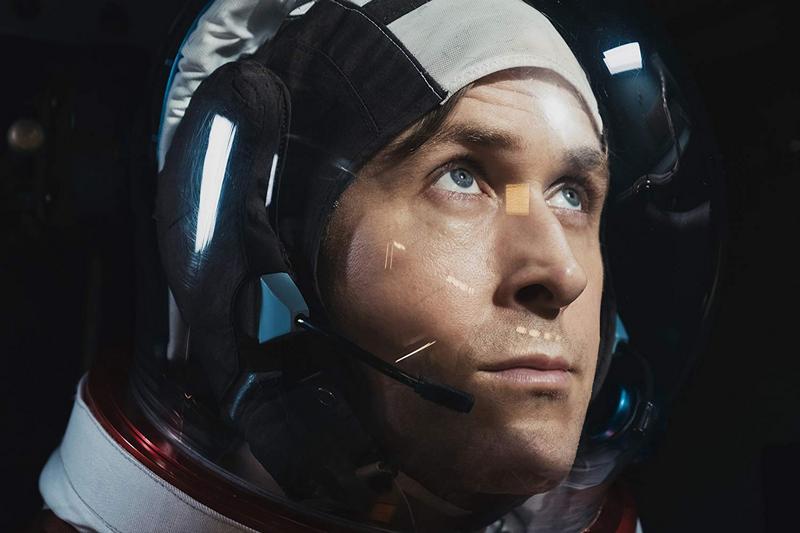
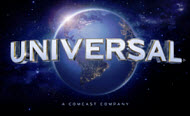
It alternates between a documentary-like feel and scenes of lyrical beauty, which along the way recreates the ambiance of the 1960s right before your eyes.
The distance to get to the moon is matched by the distance we feel in trying to understand the character of Neil Armstrong as portrayed in this film.
When I walked out of the movie theater after seeing this film, I felt inspired and encouraged, but the ending of the film makes one realize that there is more work to do. Neil Armstrong had his turn, and now we have our turn.
It’s worthwhile to make the effort to see this long film.
My Ratings: Moral rating: Better than Average / Moviemaking quality: 5